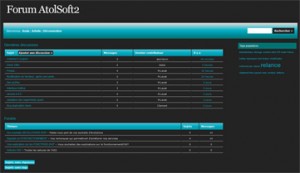This type of detectives carried out a review of research, until out of techniques and negative effects of bariatric Cards measures. A maximum of nine e-books was basically as part of the finally analysis, having another 6 files describing endolumenal strategies provided getting evaluation. Every Notes education then followed a crossbreed procedure. Crossbreed Cards sleeve gastrectomy (hNSG) was described inside the 4 humans and dos porcine studies. For the individuals, 6 victims (23.1 %) had been transformed into old-fashioned laparoscopic steps, and step one post-medical effect (step three.8 %) are advertised. Imply excess weight losings is actually 46.6 % (listing of thirty-five.dos in order to 58.9). The brand new experts concluded that transvaginal-helped sleeve gastrectomy seemed feasible and safe whenever performed because of the rightly coached advantages. However, they stated that developments need to be designed to defeat newest technical limits.
An enthusiastic UpToDate feedback into « Absolute beginning transluminal endoscopic functions (NOTES) » (Pasricha and you may Rivas, 2018) claims you to « Sheer starting transluminal endoscopic businesses (NOTES) are a promising community inside gastrointestinal operations and interventional gastroenterology inside the that the doctor accesses the new peritoneal cavity through a https://datingranking.net/cs/amino-recenze/ hollow viscus and you may functions diagnostic and you may healing measures … There was a lot more that needs to be heard of which process, including the danger of peritoneal toxic contamination. To date, the brand new readily available looks regarding scientific sense does not demonstrate deleterious outcomes linked to toxic contamination and you can then infection. Today, Notes still should be considered generally experimental and may be achieved merely from inside the a study setting ».
Sweets Cane Disorder (Roux Disorder)
Sweets cane problem (CCS), coincidentally known as Roux disorder or Candy cane Roux problem, are a rare side effects during the clients once Roux-en-Y gastric bypass operations. It occurs if there’s a too much period of roux limb proximal so you can gastrojejunostomy, starting the possibility for food particles in order to resort and remain into the this new blind redundant limb.
Every had pre-operative works-up to select CCS
Aryaie and colleagues (2017) noted that CCS has been implicated as a cause of abdominal pain, nausea, and emesis after RYGB; however, it remains poorly described. These investigators reported that CCS is real and can be treated effectively with revisional bariatric surgery. All patients who underwent resection of the « Candy cane » between were included in this study. Demographic data; pre-, peri-, and post-operative symptoms; data regarding hospitalization; and post-operative weight loss were examined via retrospective chart review. Data were analyzed using Student’s t test and ?2 analysis where appropriate. A total of 19 patients had resection of the « Candy cane » (94 % women, mean age of 50 ± 11 years), within 3 to 11 years after initial RYGB. Primary presenting symptoms were epigastric abdominal pain (68 %) and nausea/vomiting (32 %), especially with fibrous foods and meats. On upper gastro-intestinal (GI) study and endoscopy, the afferent blind limb was the most direct outlet from the gastrojejunostomy. Only patients with these pre-operative findings were deemed to have CCS; 18 (94 %) cases were completed laparoscopically. Length of the « Candy cane » ranged from 3 to 22 cm; median length of stay was 1 day. After resection, 18 (94 %) patients had complete resolution of their symptoms (p < 0.001). Mean BMI decreased from 33.9 ± 6.1 kg/m2 pre-operatively to 31.7 ± 5.6 kg/m2 at 6 months (17.4 % EWL) and 30.5 ± 6.9 kg/m2 at 1 year (25.7 % EWL). The average length of latest follow-up was 20.7 months. The authors concluded that CCS is a real phenomenon that could be managed safely with excellent outcomes with resection of the blind afferent limb. A thorough diagnostic work-up is critical for proper identification of CCS; and surgeons should minimize the size of the blind afferent loop left at the time of initial RYGB.

